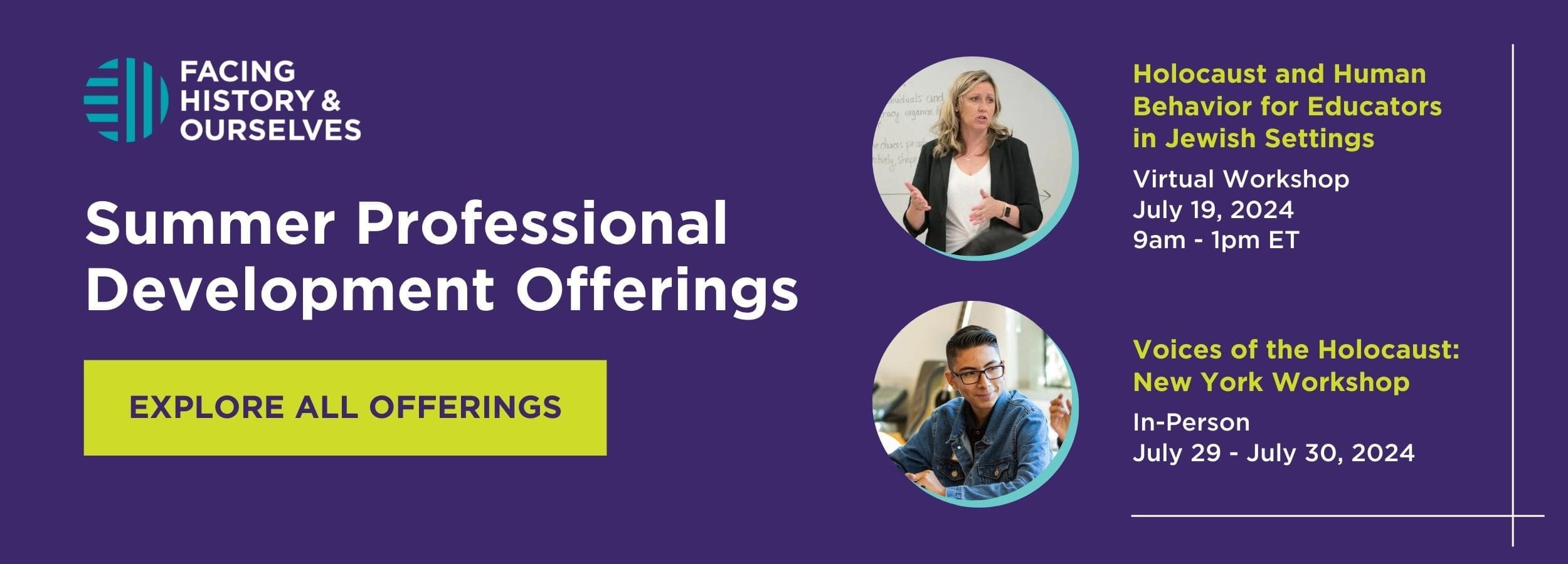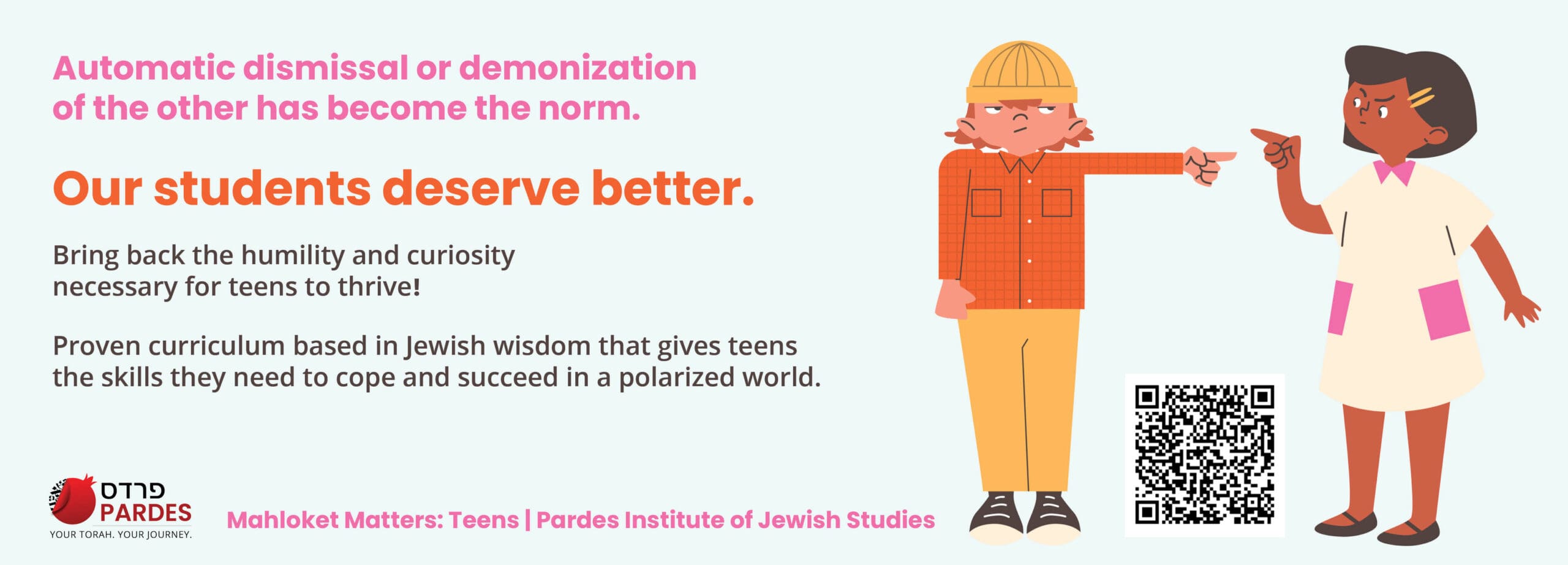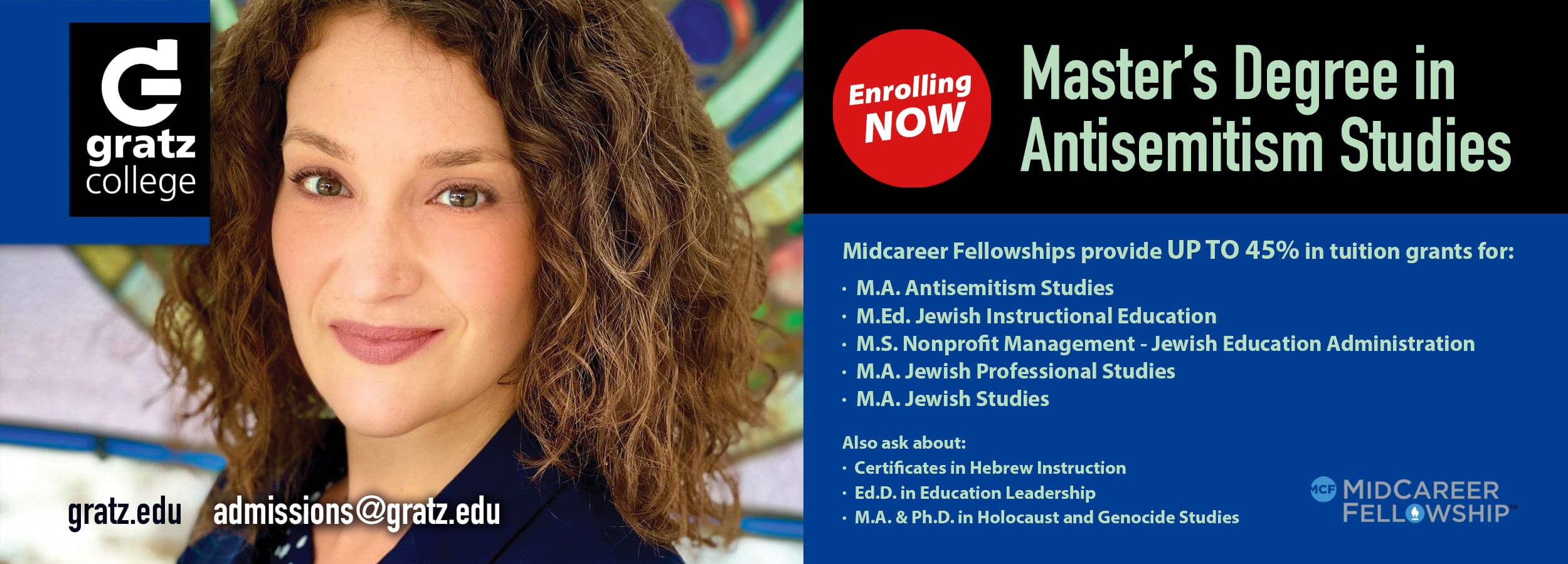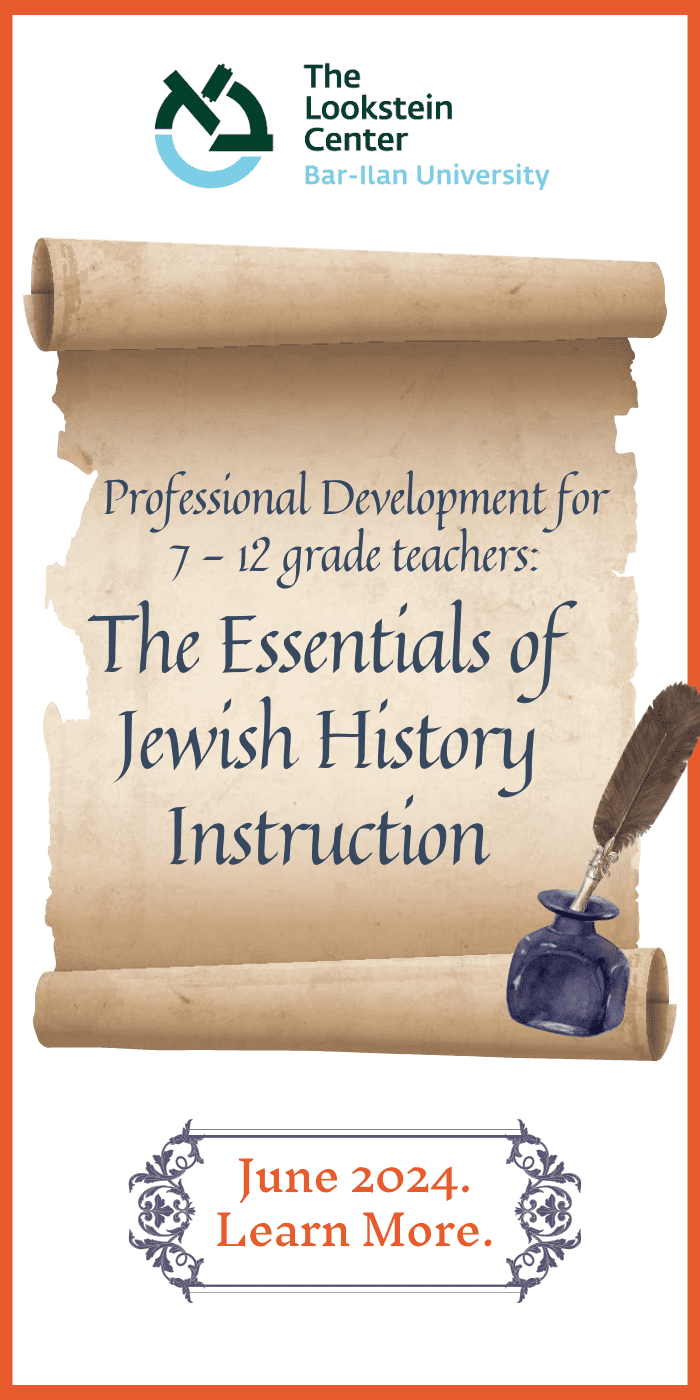Diversity, Kindness, and Developing A+ Human Beings: an Interview with Mark Shpall
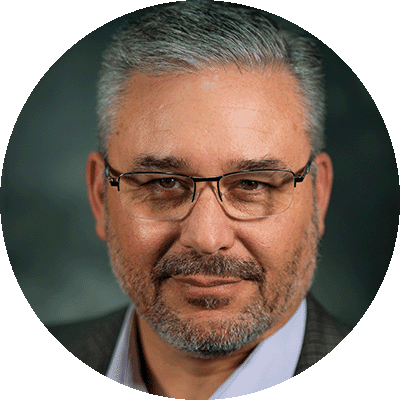
Mark H. Shpall is Head of School at de Toledo High School (West Hills, CA) where he began his educational career in 2002. Mr. Shpall has served as the Dean of Students, Director of Community Programming, AP Government teacher, 11th/12th Grade Dean, Accreditation Coordinator, Director of Experiential Education, Shabbaton Director, Head Girls’ Basketball Coach, and Assistant Wrestling Coach. Mark received his J.D. from the University of Southern California and worked as a civil litigator for almost 9 years. He earned his Master’s in Education at Pepperdine University and is a graduate of the Day School Leadership Training Institute.
Jewish Educational Leadership: In what way do you see diversity in your school as a challenge and in what ways do you see it as an opportunity?
Mark Shpall: I try not to see it as a challenge. I really do see it as an opportunity because our students will continue to grow and go off to college, where they are going to be exposed to the real world, working with and interacting with people of all different backgrounds, ethnicities, learning abilities, appearances, etc. So we have the opportunity here to start or continue to process being open to that. We really try to do that from day one. [Editor’s Note: This interview took place in August 2023.] In fact, we start school a week from today, but we are doing our retreats for our ninth and tenth graders starting now. Those retreats are all about the process of students opening themselves up to others in different ways and in different formats. We talk to our students about our core values, we want to talk about them so often that they start rolling their eyes at us because I know when they roll their eyes or make a joke about our core values, we are getting the message across. We do this ad nauseam, intentionally, so that it is so deeply ingrained in them that it becomes part of their ethos.
Amongst those core values, the overarching one is to be an A+ human being. As an academic institution, the highest grade you can get in any class is an “A.” But when it comes to being a human being, that’s when you can actually get an A+. We defined five core components of becoming an A+ human being, all of which work into the idea of addressing diversity and teaching our community—students and faculty—to be open to all different types of people. It could be diversity within the Jewish people—different Jewish perspectives, different religious denominations, and different Jewish ethnicities (Ashkenazi, Sephardi, Mizrahi). It could be learning differences, gender differences, or gender identity differences. To be an A+ human being you have to show kindness. We call it our Advanced Placement kindness course. You have to have a circle of friends. Not a clique, because a clique is exclusive, but a circle is open to being more inclusive. For example, everyone is entitled to choose who their friends are, but if you see someone sitting by themselves, include them at that moment. No lashon hara, no gossip. Now I know that these are very aspirational; we don’t expect high schoolers or even adults to be perfect at this, but it reflects our aspirations and our core values. Another one of our core values is to work towards excellence; and be the best version of ourselves. So, starting from moment one, even before the formal opening of school, as students get on the bus to the retreat, we emphasize those values about how important it is to be kind to each other. And I think if you start from that place, and you see every single person as a tzelem Elohim, then it’s all an opportunity, not a challenge.
Are there instances in which it doesn’t work so well?
Absolutely. We’re talking about human beings. And teenagers. We know the science of brain development, and we know that the frontal cortex [which affects functions including judgment] is not developed until at least age 25—so we need to have reasonable expectations for 14-18-year-old students. There are ups and downs, and every kid is different. Some kids come in and they’re just there, the model de Toledo student who embraces our values, and many more who may have a rough freshman and sophomore year, and then all of a sudden you really see this growth into their junior and senior years. I remember one student who I never thought really got it; I didn’t think that he would actually make it through four years, both academically and more importantly, in the area of values. A few years after he graduated, he showed back up in our front office. “I came back to see you because I finally figured it out. I know that I barely passed high school, I know I was a pain the whole time; I wasn’t an A+ human being. But suddenly it hit me—I’m back in school, I’m getting straight A’s and working full time. I came back to apologize for wasting the opportunity you all tried to give to me.” We are planting seeds here with these kids. Some of them really take root and flower before they leave, some of them may take a little time, and to be fully transparent, there are occasionally cases in which students and their parents aren’t able to fully embrace what we are and who we are and what our expectations are to the extent that we have had to ask students to remove themselves from our community because they’re taking away from the community. We try really hard not to do that. We work very closely with the students and their families; we try to put in all the supports. We are very much a school that lives in the gray, not in the black and white regarding student behavior and comportment. Black and white is to me a silly concept. Zero Tolerance is a silly concept for teenagers because they all make mistakes. Nonetheless, sometimes it becomes clear that it’s just not the right fit, but those are the rare exceptions. We really do expect that by the time they graduate, most of them will get it most of the time.
You mentioned parents. What do you do to get buy-in from the parents, and from teachers?
I’ll start with the parents. First of all, we’re in the business of helping to raise and educate children and students. We have an orientation for all the new parents in our community where we are explicit about our values, go through what our expectations are, and go through parenting ideas to help them step back to let their children start to take agency over their lives both academically and behaviorally, while being aware that part of parenting is the responsibility to sometimes say “No.” In fact, teens expect it and secretly they really want it. So we have these conversations with parents and there are follow-up conversations with individual parents when there are challenges. We set out our core values right from the start, and if there are parents who are uncomfortable with those or think that their kids can’t deal with them, then they, thankfully, have many other options in schools that might be more aligned with their values.
With faculty, there needs to be a much tighter alignment, and that needs to be in place from the interview process. We don’t just interview for pedagogical skills and content mastery; we need to see that you’re going to fit into our community and our approach. We believe that our approach is unique—we’ve been cultivating it for 22 years, and we need to know that the candidate will fit. There are schools where zero tolerance works, and black and white works, and you know exactly if a kid does X then Y is going to happen. That’s not us. And if that’s not right for you, you also shouldn’t want to be part of us. In fact, I am involved in the interview process for every single hire, from a senior administrator to a teacher to a support staff person, because I need to make sure that they are going to fit in culturally. I start most interviews by asking a candidate what they think their job is going to be at our school. Their answers are usually the same: to teach math or history or whatever. At that point, I respond that that is what they will be doing, but that is not their job. I present them with the school’s mission, its sense of close-knit community, and its goal of developing A+ humans. That’s their job. They will accomplish it through teaching their discipline. So those expectations and core values are right up front, and if they can’t embrace it then this is not the right place for them. But it doesn’t stop there. Every teacher goes through a two-year onboarding process with a mentor who’s been here for many years, just to help them understand the intricacies and subtleties of our approach. We want every member of our team to be successful, to share our mission, and to be part of fulfilling it.
You described your culture, how you introduce it to students, parents, and teachers, and how welcoming the “other” is central—diversity, for you, is primarily an opportunity. Are there limits to what your school embraces or tolerates?
Absolutely. There are times when we have asked a child to withdraw before we “withdraw” them. There have been times when, through the application and interview process, we’ve not accepted a child because of behavioral issues, or because of culture and values. We’re about building community. When you enter our school one of the taglines you’ll see on the wall is, “Building community one mind at a time.” We see each kid and their tzelem Elohim. I’ll give you an example. We take the entire school, including all the faculty and their families, away for a Shabbaton on the site of a local Jewish summer camp about a week before Pesah. It can sometimes be as many as 700 people. It is one of the culminating, cornerstone moments of our year. Kids start talking about it six months in advance. A few years ago, three kids ended up in the hospital because they had ingested too much cannabis. One of the students had brought up some edibles and given them to two other kids; the three of them had too much and ended up getting sick.
I would guess that most schools would respond by automatically expelling them. We handled things much slower. There was lots of conversation, communication, and investigation, in which we found out that one of the boys, the supplier, had a long-time substance abuse problem. He found these two other boys his age who were dealing with a lot of social anxiety and stress and kind of pushed it on them; they’d never actually used pot before and obviously didn’t know what to do because they ended up ingesting way too much. After they got out of the hospital, we looked at each of those situations very differently. We asked the kid who was the supplier to withdraw, not necessarily because of the issues he had, but because he broke the trust of our community and harmed other kids who were vulnerable. The other two, who were dealing with a lot of other issues, and this was their way of self-medicating, were suspended for the rest of the year. They would be allowed to finish their classes online—and this was before COVID—as there were only five weeks of classes left and it didn’t feel right that they shouldn’t be able to complete their sophomore year. But, we added that if between March and August, they could take care of themselves in ways that could prove to us that they’ve really learned a lesson and were making major changes then they could reapply, and the school would be open to re-accepting them.
The two families thanked us for the opportunity to work together to heal their child and find a potential route to still be a part of the de Toledo community. They both spent the next few months rebuilding themselves—one of them did Outward Bound for five months while the other did a different wilderness program. And both went into intensive therapy. They came back in August. We spoke with them, with their parents, with their therapists, and when we were sure that all the supports were in place, we told them that they had earned our trust enough to give them a second shot. At the time I was Dean of Students and I pointed out to them that they had been through a really difficult process, but that nothing would give me greater joy than when they would walk across the stage at graduation where I would hand them their diplomas. These boys became model students, and I can still remember giving each of them a hug at graduation. So yes, there are limits. But yes, we try really hard not to get there.
I think of Jewish schools as places where we try to build commitment and passion, particularly for Jewish values. And I’m wondering how embracing diversity impacts the school’s ability to imprint passion.
From a personal and professional perspective, I think that embracing diversity only enhances our Judaism. We are a pluralistic, non-denominational school; we are not affiliated with any other organization or denomination. We have students and families who come from Modern Orthodox or Flexidox or Conservative homes, whatever the terminology you want to use, and we have students whose entry into de Toledo is literally the first Jewish thing they’ve done in their life. Because of that range, we have a real opportunity to significantly impact the Jewish souls, approaches, and passions of our students. I might formulate this as that our goal should be to make every student equally uncomfortable about their Judaism. If you are more traditional and more observant, I want you to be uncomfortable by spending time sitting at a lunch table with a peer who may be eating a turkey and cheese sandwich. For those coming from less traditionally observant backgrounds, we want to push them to see greater observance as something to be interested in and worthwhile exploring. We don’t want to dictate how anyone should or should not be observing but to meaningfully explore different ways of experiencing and expressing Jewish commitment. Here’s another example. When they walk into our tefilla, they will sometimes encounter a traditional mehitza minyan, or the house band playing, and sometimes we’ll do Disney tunes or show tunes that we’ve adapted. They don’t have to like all the options, but they need to be exposed to them and try them out because our high school is really about trying on new hats and new identities. That’s why I think a lot of our students are trying new things when it comes to their own expression of who they are, and the same can be done in the Jewish realm. I also want to make Judaism as exciting as possible because we are the last formal Jewish experience that is going to be imposed on these students. I don’t want our Judaism to be so pedantic, rigid, and unfun that they want to run from it when they leave. I want them to go off to college and say, “Cool, how do I find something now that keeps talking to me? I don’t care if it’s Chabad, Hillel, AEPI, the Jewish fraternity, AEPhi the Jewish sorority, AIPAC, or Jewish social justice, whatever it might be. I want them to explore their Judaism and find what works for them.
If I understood you correctly, it sounds like you’re saying that all students are experiencing all the options, rather than having them choose their experiences in the school. Like the way you described tefilla. Is that really the case? Are there choices in Jewish studies classes, or do all students have to go through a prescribed program?
Let me start with tefilla and move on to our approach to Jewish studies. As I’m sure you are aware, for Jewish day schools, tefilla is the most difficult regular programmatic piece we deal with, and I’m sure that that is pretty much universal. Here it is compounded by the fact that there are probably many parents who don’t necessarily care about it. So, our approach is to try to make it as engaging as we can. One way of doing that is to try to make it as “bottom-up” as we possibly can, meaning we want the students to program it. In fact, we’ve created an honors-level Jewish studies class for sophomores and juniors in which they study about tefilla and then create different tefilla experiences for the student body. That’s where the Disney-themed tefilla came from. Or, for Sukkot, instead of prayer, they created a whole Sukkot fair with 15 different booths on campus to learn about different aspects of Sukkot that are important—and they run those booths and teach their peers. Whatever those tefilla options are, everyone does them during the school year. There is an option for a daily mehitza minyan, and most Jewish classes require their students to go to at least two different minyanim during the semester, to expose them to different opportunities. The one time that there’s an abundance of choice is at the All School Shabbaton, where we have this wide range of options including the “touchy-feely” tefilla you’d expect to find in Southern California and in a school where many of the school leaders have their roots in Jewish camping. So at the Shabbaton, with everyone present, we know that we have to be embracing all the different religious perspectives, including those who are Shabbat observant. So there will be a mehitza minyan for those who need it, while the rest of the school is together with the house band playing. Then the whole school comes together for the Torah reading service because community is so important to us. And for that, we turn the music and the amplification off.
As for the academic program, everyone is required to take Hebrew for the first three years of school with an option for the fourth year for those who choose that as their elective. Within the Hebrew program, however, we have fifteen different levels because we have a pretty sizable Israeli expat community in which most can speak fluently, but not all can read or write but, we also have the Americans who have technical reading and writing skills but aren’t conversationally fluent. That’s part of our diversity. Everyone is also required to take four and a half years of Jewish Studies. For the half year, we have a class on the Shoah, which is really about how we prevent this in the future. But you have to take Jewish Studies your entire time here. But again, there are different tracks because some students come in with absolutely no Jewish background and need the basics while others have a very rich textual foundation and will follow a more traditional text track of Talmud and Tanakh Beit Midrash, going up to very high levels. Parallel to those, we have a variety of creative classes focusing on contemporary Jewish topics, like Judaism and the environment, where they will study texts about what our tradition says about protecting the earth and the land and the environment, and then they actually spend time some days working in our organic garden on our campus. So again, we want to make this as engaging and as fun and as interesting as possible, so that they don’t leave wanting to run away from their Jewish learning.
I’d like to take us in another direction now and ask you about challenges or opportunities with regard to specific types of diversities that have become increasingly important in recent years. Have you dealt with issues of fluidity of gender identity, sexual orientation, and diversity of family structures? How does that play itself out?
Remember that I’m speaking to you from Southern California, Los Angeles. This has been part of our community for a long time, even when no one else wanted to talk about it. Almost since we started, we’ve had students who openly identify as gay. Our largest student club is the Rainbow Alliance, the gay-straight alliance, so that has never been an issue here. Over the last seven years or so we’ve been learning and opening ourselves up to the gender spectrum, non-binary kids, or those who are transitioning. So although I wouldn’t necessarily say that we’re in the forefront, we are certainly not lagging behind on these issues. Maybe five or six years ago, before COVID, we went through a process of switching over a few of our bathrooms to become non-gendered bathrooms, and we did it in a very intentional way. These are not individual bathrooms that you go in by yourself and lock the door, which we did for lots of reasons. So, our non-gendered bathrooms have multi-stalls in them, that anyone can use. We did about a year’s worth of work on the learning and teaching around it and getting ready to unveil them.
What was really interesting was that we spent so much time in our senior leadership meetings learning and discussing how we were going to unveil it and talk about it, but when we did it in a big town hall with the students it was like a lead balloon. The students couldn’t believe that we had made such a big deal out of it. The kids are so far ahead of us. Educating the parents and the other adults was more complicated, and there are probably still some who are not yet comfortable with it. Some give us difficulty that we would entertain this at all or that we would entertain using alternate pronouns. We have students who are non-binary or questioning. We’ve had at least two students I can think of that have transitioned, one immediately after graduation and another during her senior year. There are some students who don’t have the maturity yet to be able to accept or at least be silent about their non-acceptance, because they’re teens. But as a school, our job is to educate them to accept what others do as long as it doesn’t affect them negatively. Everyone should be allowed to have their own beliefs and be allowed to live their life with their choices without being criticized by others.
In recent years, politics have taken on a very divisive role in the Jewish world, both local politics and politics relating to Israel. How did your school handle this? What role do you think schools should play in this?
We have taken some flak from some parents over our approach to gender inclusivity and such. I took heat from a number of families who told me I was forsaking Hashem by requiring our community to be vaccinated when we were allowed to come back in person during COVID because we wanted to be protective of everybody here. The most difficult thing has been the last eight years of politics, and I speak not only from the perspective of a Head of School but also a classroom teacher. I teach our government curriculum, so I’m really very much in the middle of this.
I fondly remember the days of the Bush – Kerry election. I had my students do a debate for the whole school and then we did a mock election. Interestingly, it broke down exactly the same—almost to the percentage point—as the real election results, which was surprising considering that we’re in liberal Southern California. Those dynamics have clearly just broken down. We definitely have a role in this because we are dealing with high school students who are just starting to become politically aware and to form their opinions, and this is a time in their lives to try on new hats and new ideas. So, it really is our job to bring them into that discussion and explore, no different than our earlier conversation about gender identity and such—we need to be a place that is open to a plurality of political views. And it’s not only about what is said but, more importantly, how it is said; there are ways to be supportive of all different points of view.
One of the things I say at the beginning of my government class is that we’re going to talk about a lot of hot-button issues and that we need to learn to speak about them and debate them in kind terms and not engage in personal attacks. Are there topics that are probably not open for debate? Sure. If anyone were to bring up the concept that we should reinstitute slavery for African Americans, that would be shut down immediately as a value-less position. But all the other stuff that we’re fighting about, whether it’s immigration, tax law, abortion, or whatever, there are legitimate arguments on both sides. As a school, however, it is really our responsibility to model that muscle of leshem shamayim, arguments for the sake of heaven. We can have these difficult conversations in a values-based way, without invective and without ad hominem attacks. It’s really important for our teachers to model a listening ear and not a prescriptive tone. My favorite moment is when graduates ask me years later who I voted for or what my politics are and I tell them that my politics were none of their business and it still shouldn’t be, it is their political views and philosophy that are important. The more difficult part is how to respond when there is a politician who is talking nastily about certain groups, wanting to treat them poorly or kick them out, or saying that they don’t belong, or using words that are really against our values as a school and as Jews. My teachers struggle with responding without making it look like we are talking down to that politician or that party. So I tell them that it’s essential to not be reactive but to come from a place of curiosity. Let’s ask the students questions and get them to a place where they can hopefully hear it and see it themselves. But it is really hard.
For the 2016 election, I had all my AP government students in my house for the election night, which I always did, and just naturally, the students who were in favor of Hillary were in one room and that was a majority, and the kids who were hoping that Trump would win were in another room. And you could just feel the energy move from one room to the other. The next day at school, for many people, it felt like we were at a funeral. That was difficult for the conservative-leaning students who felt unsafe in that environment and who were uncomfortable expressing their views. In response, we began a series of conversations and town halls and coffees from which we created an ad hoc board community called our Values in Practice Community where we brought together parents who represented the more right-wing perspective, parents who are on the more left-wing side, some of whose positions were more faith-based, one of our rabbis, one of our board members who’s the dean at HUC, and a few other board members. We presented them with a range of topics and asked them to collaboratively examine how we could deal with them as a school and as an educational institution. They were tasked with providing me guidance, so I would get perspective from the full range of parents and families on how they hear things so that I could bring it back to my faculty and strategize how we could maybe approach this differently. While many of these parents were initially very angry and felt that they were not heard—and believe me, it was very difficult to hear their complaints against me and the school—it got us to a good place so that they were very appreciative of what we had done to try to change the dynamic. So our educational approach of respecting a range of positions was tested and refined to transform the contentious arguments into productive and respectful discussions.
I am honestly quite worried about this next election. We’ve never had an ex-president who’s under multiple indictments and running for re-election. There’s a lot of emotions on all sides surrounding this. And we are dealing with teens, whose emotional controls are still being developed and who don’t have a handle on how they deal with conflict and anger and disrespectful dialogue. Our commitment to respectful discussion, and to diversity of ideas, is going to be tested. It’s going to be an interesting time, but I am concerned.
Were there examples of actionable items that came out of that Values in Practice community that you can share with us?
I’d have to go back to my notes. We met intensively for a semester and then it kind of died away because both sides were feeling hurt. But then we came back and discussed things like how to discuss politics in the classroom, and how to deal with faculty who believe in X… One of the things that was very helpful was that we were transparent about it. We sent a survey out to all the parents and the board which included a description of what we were doing, what its purpose was, who were the people on the committee, and we asked people what were the issues that they wanted us to work through. What were the areas that they wanted the committee to focus on with regard to providing guidance for me as the representative of the faculty? So we spoke mostly about issues related to COVID and about the really contentious political topics. We weren’t sure what would come of the committee’s work, and I would never have guessed how wildly successful it would be.
Do you think that the success was because parents felt heard or do you think that it actually led to changes in the classroom?
Yes, yes, and yes. It was partly about being heard and letting them hear our perspective, so both sides could be talking to each other and not at each other. We really worked to build respectful conversations and if people got a little bit heated because there were a lot of emotions involved, the other side worked not to get caught up in those emotions but tried to let them know that they were heard and to avoid making it personal. That was a big part of what those conversations were. So, certainly, a big component was ensuring that everyone not only felt but was actually, heard. In the process, we were also able to dispel misunderstandings and some misperceptions of what was actually happening. There were also these backchannel WhatsApp groups that, instead of being toxic, helped to share the positivity of what was happening in the discussions. I went back to our principal, our Chief Education Officer, who’s really in charge of all the teachers, pedagogy, and curriculum, and shared what we were hearing so that we could talk this through with the senior leadership team and senior educators team to figure out how we could distill the discussions and the messages and pass it on to the faculty. So having it filter down to the parents on one side and the faculty on the other was really productive. And everyone got the sense that this was not a show pony, but something that we and the board were taking very seriously.



Mark H. Shpall is Head of School at de Toledo High School (West Hills, CA) where he began his educational career in 2002. Mr. Shpall has served as the Dean of Students, Director of Community Programming, AP Government teacher, 11th/12th Grade Dean, Accreditation Coordinator, Director of Experiential Education, Shabbaton Director, Head Girls’ Basketball Coach, and Assistant Wrestling Coach. Mark received his J.D. from the University of Southern California and worked as a civil litigator for almost 9 years. He earned his Master’s in Education at Pepperdine University and is a graduate of the Day School Leadership Training Institute.
Reach 10,000 Jewish educational professionals. Advertise in the upcoming issue of Jewish Educational Leadership.
Do you want to write for Jewish Educational Leadership? See the Call for Papers for the upcoming issue.
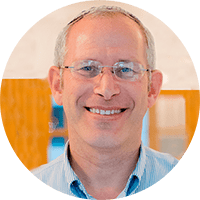

FROM THE EDITOR: SPRING 2024
In the 1970s, UJA’s rallying slogan was: “We are One.” Indeed, those were the days in which the Jewish community banded together over three core principles—commemoration of the Shoah, saving Soviet Jewry (and Syrian Jewry and Ethiopian Jewry), and Israel. The past fifty years have eroded each of those. People are tiring of the Shoah and are eager to move on from what Salo Baron termed the “lachrymose conception of Jewish history.” Soviet Jews left en masse in the 1990s with the fall of the Berlin Wall and the collapse of the Soviet Union, and Jews of Syria and Ethiopia have mostly migrated and resettled as well. And Israel, which is itself grappling with unparalleled polarization, no longer serves as a uniting factor for many North American Jews. All this leaves us, fifty years after the UJA banner, with a dramatic shift in punctuation:
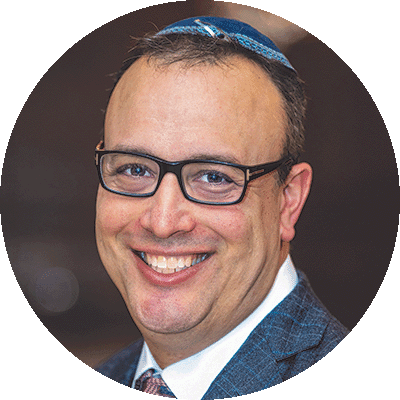

Accepting and Representing the Greater Jewish Community: an Interview with Jonathan Levy
We represent the Greater Toronto Jewish community, which means what we see in the Greater Toronto Jewish community is what we want to see here at our school. That can mean the whole range of diversity. It can be religious backgrounds, it can be a physical disability, it can be academic challenges. Of course, we do have limits in terms of what we can do and what we can’t do. We can’t be everything to everybody, but our goal is to be a diverse community that represents the Greater Toronto community. If you see it out there in the Toronto Jewish world, hopefully, you will see an element of that in our school as well,


Realities and Opportunities of Diversity in an Orthodox School: an Interview with Leonard Matanky
I see diversity as a reality. Because our schools have always been diverse, the question is, how diverse should our schools be? On the one hand, we can talk about tribes, every tribe had its own personality, and those personalities didn’t always mesh so beautifully, like the way that Yissakhar and Zevulun are often presented. So, I see diversity as something that has always been present. I think the one challenge we have, when it comes to the question of diversity is the very same kinds of things that Jonathan Haidt talks about when he talks about the moral foundations theory and how we view that diversity within a religious institution. And so, our school has always been a diverse
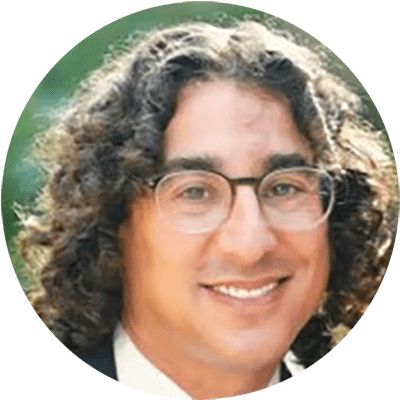

Aspiring to Expand our Circle of Inclusion: an Interview With Jon Mitzmacher
The opportunity is to ensure that our students come through their experience with an opportunity to learn about and learn with those who may be different than themselves, different across a variety of categories, whether it’s socio-economic, whether it’s learning differences, whether it’s with ideological differences, the value is in experiencing themselves as part of a diverse kehilla. The challenges, I would say, are divided into two broad categories. Most of the kinds of diversities that are challenging for schools boil down to economics;
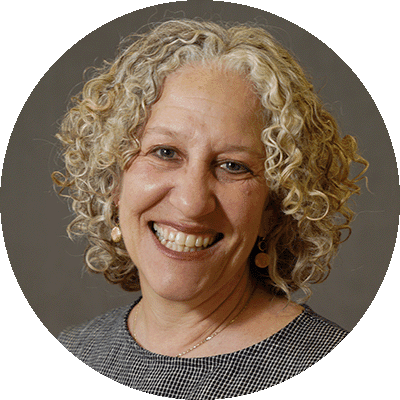

Embracing Diversity, Building a Stronger Jewish Future: an Interview with Nicole Nash
I’m going to start with opportunity because, to me, the opportunity outweighs any challenges. I’ve been in the field for a long time, and when you work in Jewish education, you meet so many children, parents, faculty, staff, and community members. I’ve had the privilege to see just how diverse the Jewish people are. When we are at our best, our diversity can be a real source of strength and celebration of Jewish peoplehood. When I say diversity, I think about it across ethnicity, race and nationality, Jewish identity and practice, interfaith family composition, sexual orientation, gender identity, life experience, socioeconomic status, worldviews—the list goes on and on.
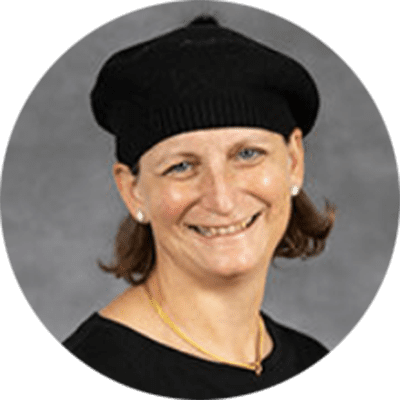

Cultivating Individuality and Cultivating Belonging: an Interview with CB Neugroschl
Diversity is both a deeply meaningful value and also a pop language word that means many different things to different people. When I was a Jewish philosophy teacher, diversity in our curriculum was about the relationship between Jews and non-Jews and about how we understand Hashem’s mission for both. When I speak about diversity today here in Teaneck, I recognize that we are talking about a very tiny slice of the diversity pie. The reality is that we are an all-girls Orthodox high school serving a fairly homogenous community. Of course, there are going to be nuanced differences, but the bottom line is that all those differences are within a fairly narrow band on the spectrum. So, here’s some background on where diversity is important in our context.
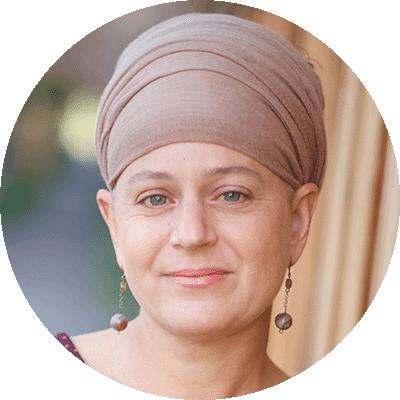

Ahavat Yisrael in a Small Jewish Community: an Interview with Tania Schweig
We’re a small community and our school has about 165 students. We’re quite stable in our enrollment and there are those who come and go because of the university. I feel like there’s a tremendous importance in small communities like ours and also a tremendous gift in these small communities. And I think our community has this special quality of ahavat Yisrael (love for our fellow Jewish people). I think that it’s important to say this because it is connected to the work of diversity. I really appreciate—like genuinely love—diversity. I like being in a place where it’s safe to be all kinds of things; it mirrors my own path. When I was in Pardes in Israel, I got to choose my path, I didn’t want to be in a box measuring up to someone else’s standards. For example, I wanted to be the person who’s becoming observant yet who is also asking questions about feminism.
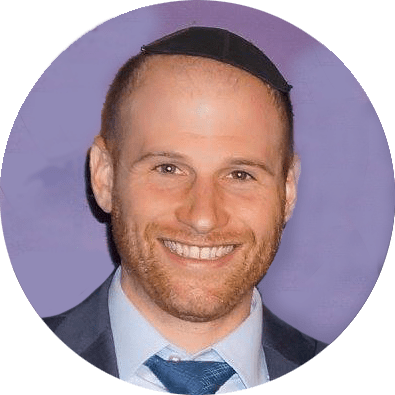

Compromise for the Sake of Community: an Interview with Sam Weinberg
I think that it’s important to remind ourselves that our diversity is defined in fairly narrow terms. We like to say that we are diverse, and that means that we span from traditional Conservative to right-wing Orthodox. Within that range, we like to celebrate our diversity, and that means that we can all learn from each other. That can be a challenge, since some in our community are very cautious about, if not openly hostile to, the idea of learning from those outside of their own group. It wasn’t always this way; I see more separatist trends developing in the last ten years, meaning that at least one segment of our population is growing increasingly insular. The community in general has become much more polarized, and some people only want to be with others who look and think like them.


